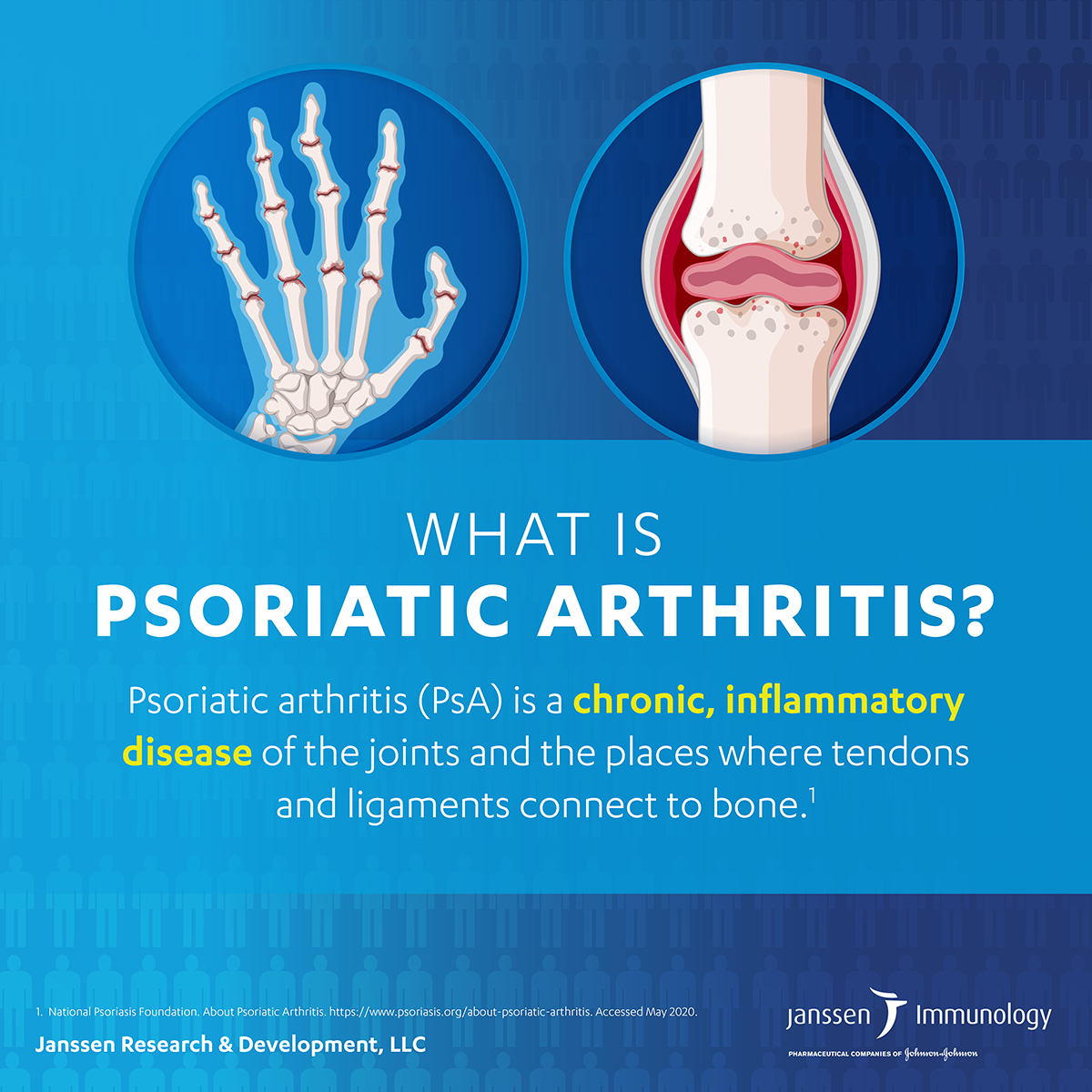The Importance of Studying the Broad Impact of Psoriatic Arthritis
In my work at Janssen Immunology supporting clinical development of medicines for patients with psoriatic arthritis (PsA), I get an opportunity to think a lot about how these patients’ daily lives are impacted by their disease.
PsA is an extremely complex, multi-faceted, debilitating, immune-mediated disease that can affect patients in so many ways, both mentally and physically, with broad symptoms ranging from joint inflammation to skin manifestations to bone damage, and even depression and fatigue. It is with these patients in mind that we prioritize studying both the well-known and the lesser-known intricacies of PsA.

This week I am participating in the 2020 European League Against Rheumatism (EULAR) E-Congress. In conjunction with the meeting, I wanted to share my thoughts on some of the varied manifestations of PsA, and how teams and I have approached incorporating those manifestations into clinical research. I believe that more data on these manifestations can help the rheumatology community better understand and approach treating PsA patients.
Flares
Patients are considered to be in a flare when they have an increase in their disease activity and have worsening of symptoms.2 PsA flares are thought to negatively impact patients’ lives, but this has not yet been extensively studied in real-world settings.
I’ve worked on research that aimed to add to the body of evidence for PsA flares by exploring a real-world survey in the US and EU. By asking patients, we hoped to learn more about the impact of flares on things like quality of life, disability, and productivity at work.
Fatigue
Those with PsA can experience overwhelming fatigue as a result of their disease. Many PsA patients consider fatigue one of the most challenging symptoms of managing PsA.3 For this reason, I support researching the effects of fatigue using The Functional Assessment of Chronic Illness Therapy (FACIT)-Fatigue measurement. The FACIT-Fatigue scale has garnered recent interest in clinical research for its capacity to demonstrate changes in patient fatigue.
I plan to continue to advocate for research in this area so that more treatment options can be developed that address both the clinically important aspects of PsA, such as joint and skin symptoms, as well as symptoms that patients find difficult to cope with, like fatigue.
Emotional Impacts
Anxiety and depression are often experienced by PsA patients but not typically studied and understood in real-world clinical settings.
In my work, we’ve sought to describe the prevalence of anxiety and/or depression in PsA patients and were interested to learn if there were differences between what patients reported as their symptoms compared to what their physicians reported for anxiety and depression. We also sought to understand if there was a correlation between anxiety and depression and quality of life, work impairment and disability.
It’s important that we work to better understand the emotional impacts of PsA as they can be demoralizing to patients, and further, if treating physicians aren’t fully aware of the patient’s experience.
Axial Involvement
PsA patients can experience painful inflammation of the spine joints (axial involvement), but this symptom is poorly studied across clinical trials. These patients experience back pain, stiffness, trouble bending or moving and if left untreated axial symptoms can cause permanent damage to the spine.
I encourage researchers to include axial involvement in studies of PsA patients to help the community better understand and treat this aspect of the disease.
Enthesitis and Dactylitis
PsA patients can experience painful inflammation where the bone, tendon and ligament meet (enthesitis) and severe sausage-shaped swelling of the fingers and toes (dactylitis).
Enthesitis and dactylitis are important to study because in addition to the pain they may cause, they can be difficult to treat, and may also hinder patients in completing simple daily activities.
More research can be done to help us understand if incidences of these symptoms correlate with skin symptoms, mental health, and changes in physical function.
Blood Protein Biomarkers
We’ve also looked at how blood proteins of inflammation, called cytokines, which are associated with disease activity, were impacted by treatment.
Psoriatic arthritis is a complex disease with diverse but interconnected symptoms that has a significant impact on patient daily lives.
At Janssen Immunology, we try to study varied PsA manifestations and outcomes in our research in effort to develop medicines that may help physicians and patients address the well-known joint and skin symptoms, as well as lesser-known symptoms of PsA.
I invite you to explore our career opportunities in immunology at Janssen.
1 National Psoriasis Foundation. About Psoriatic Arthritis. https://www.psoriasis.org/about-psoriatic-arthritis. Accessed May 2020.
2 Arthritis Foundation. Arthritis Pain Relief and Shoe Inserts What Triggers an Arthritis Flare? https://www.arthritis.org/health-wellness/healthy-living/managing-pain/pain-relief-solutions/what-triggers-an-arthritis-flare. Accessed June 2020.
3 Creaky Joints. These Factors Appear to Make Fatigue Worse in Psoriatic Arthritis. https://creakyjoints.org/symptoms/causes-of-fatigue-in-psoriatic-arthritis/. Accessed May 2020.

